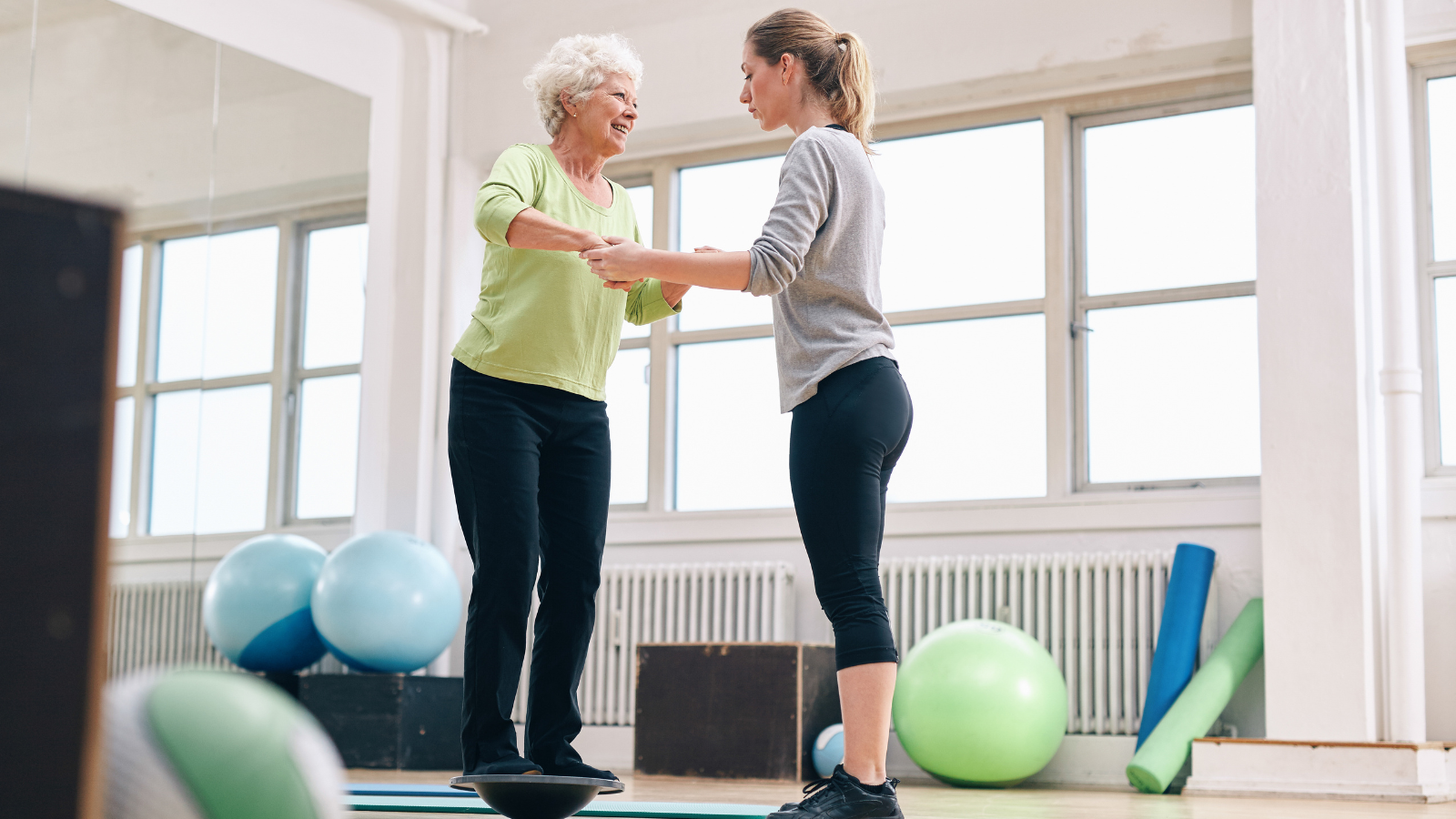What is Postural Control?
Postural control is maintaining or restoring your balance during static and dynamic activity.1 Examples include maintaining good posture while standing or sitting or keeping your balance when walking. Depending on the perturbation (also known as a disturbance to your balance), your body naturally employs different strategies to maintain your balance.1 These responses can either be in reaction to a perturbation or anticipation of a future disturbance. Reactive balance control strategies include utilizing subtle movement at your ankles or hips to keep your same base of support or employing a step outside your base of support to keep your balance. In general, we use ankle strategies for smaller perturbations, hip strategies for moderate perturbations, and stepping strategies for larger perturbations. Utilizing these strategies is completely normal and is necessary for us to use in our everyday lives.
What Happens with Age?
Unfortunately, both reactive and anticipatory postural control systems are affected as we age. Older adults use more hip strategies rather than ankle strategies to maintain their balance. For fast perturbations, older adults depend more on stepping strategies rather than ankle or hip strategies. When using stepping strategies, older adults need more steps after the initial step to prevent a fall. Moreover, external assistive devices like walkers and canes have the potential to interfere with an older adult’s ability to recover from a perturbation. Regarding anticipating perturbations, an older adult has more difficulty making postural adjustments to stabilize their body before performing a voluntary movement. These impairments can affect functional activities such as carrying groceries or walking up the stairs. Among other factors, postural control impairments can lead to falls! Therefore, challenging our balance systems and incorporating balance exercises into our daily routine becomes even more important as we age. Here are 3 ways to safely improve our balance at home:
- Single Leg Balance: Begin by standing with your feet shoulder-width apart with your hands lightly resting on a wall or counter for support. Lift one leg and hold that position for 30 seconds. Start by keeping your fingertips on your support surface and as you build up confidence then slowly remove your hands from either the counter or wall. In general, a moderate challenge to your balance system is failing 25 percent of the time and succeeding 75 percent of the time. If you are succeeding/ failing more or less than the recommended amount, then look at making the exercise easier or harder. Some way to make the exercise easier is by keeping only your forefoot on the ground rather than lifting your foot completely off the ground. To make the exercise harder, add a foam pad under your foot or close your eyes.
- Tight Rope Walk: Start by picking a destination to walk towards. Then walk step by step by placing the heel of one foot directly in front of the toes of the other foot until you reach your destination. This a great exercise to improve your coordination and balance during dynamic activities. Progress this exercise by performing more repetitions or increasing the distance from the start to the endpoint. Regress this exercise by walking with a narrower base of support.
- Lunges: Begin by standing with your feet shoulder-width apart and then step forward with your right leg until your right thigh is parallel to the ground. Hold this position for 30 seconds and then return to your starting position. Repeat on the other leg until you hit 10 repetitions. Complete 3 sets of this exercise three times per week. Progress this exercise by increasing the hold time, sets, or repetitions. Regress this exercise by performing 50 percent of the desired motion or decreasing the hold time, sets, or repetitions.
Improving your balance control systems and challenging yourself appropriately is incredibly important especially as we age. Being able to maintain our balance keeps us mobile and safe by preventing falls. If you are experiencing frequent falls, losing your mobility, or becoming fearful to move our physical therapists would be happy to help. Contact us for a free consultation today!
References
1Pollock AS, Durward BR, Rowe PJ, Paul JP. What is the balance? Clin Rehabil. 2000;14(4):402-406. doi:10.1191/0269215500cr342oa
What makes us different? Our care comes to you!
View Our Service AreaWe Are A Comprehensive Mobile Company Focused on Wellness, Fitness, Rehabilitation, and Prevention
We specialize in transforming the lives of seniors, adults and teenagers with a wide array of diagnoses and conditions in their home or location of choice. You deserve to be your best self through good health and wellness. We would love to have the privilege to work with you or a loved one.
Request a FREE Consultation Today!
